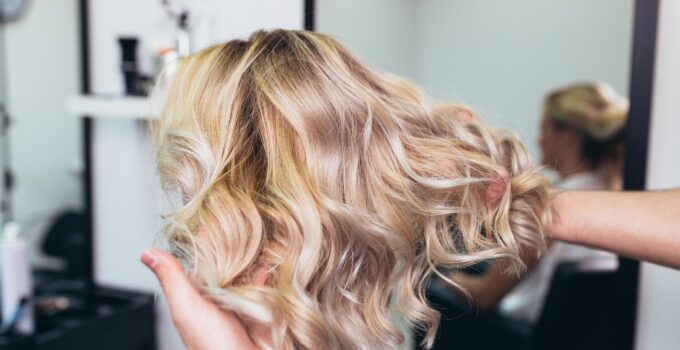It is no secret that our hair begins to change in our 40’s. We may notice our aging hair becoming drier, thinner, more brittle, and losing pigment. But don’t fret, there are plenty of styling techniques to avoid damaging your aging hair. If we style our hair with delicacy and use heat smartly, we can prevent further damage from occurring.
Page Contents
Causes of Aging Hair
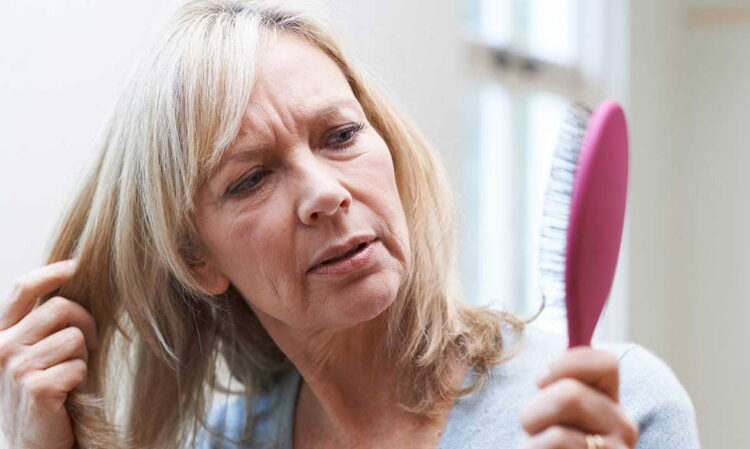
Source: hairclub.com
To reach a solution, it can be helpful to first understand the problem. Women experience aging hair in different ways, here are a few.
1. Dry Hair
Aging hair often becomes drier due to shrinking oil glands that keep natural oil from reaching the hair as it should. Additionally, post-menopausal hormone changes can lead to dry hair. Dry hair can appear brittle and wiry. Other causes of dry hair can include malnutrition, hypothyroidism, and constant heat styling. You can check bywinona.com for more information.
2. Thin Hair
A variety of causes of thinning hair can include traumatic hair styling in your 20’s and 30’s, genetics, menopause, and medical conditions. Once menopause starts, your estrogen levels drop, which will slow hair-growth. Also, post-menopausal inflammation can destroy hair-follicles and leave scarring, causing the hairline to recede.
3. Pigment Loss
As we age, our follicles produce less melanin causing gray hair. The rate of graying often depends on your genetics. Vitamin deficiencies can also speed up the graying process.
Styling Techniques
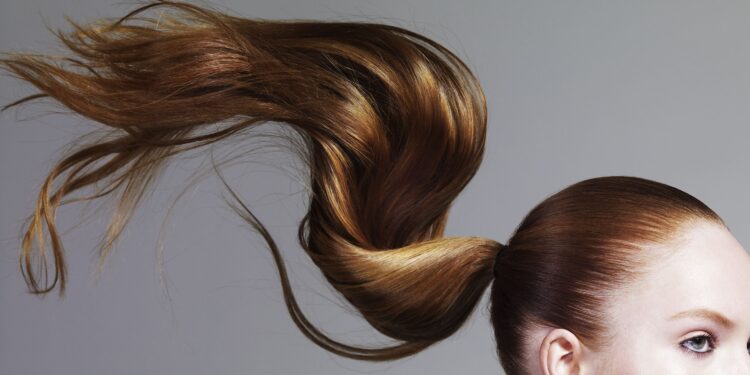
Source: harpersbazaar.com
Styling your hair in your 40’s and 50’s doesn’t have to lead to damage! If we consistently use considerate and gentle styling techniques, we can better avoid the breakage and brittleness. Here are a few best practices to work into your styling routine!
1. It starts in the shower
Cleansing, hydrating, and conditioning your hair will help prevent damage during the styling process. However, to avoid damaged hair you must be mindful of over washing. When you over wash your hair, your oil glands over-compensate for the loss of oils stripped by your shampoo. Over washing your hair leads to dryness, which makes it damage-prone. Additionally, consider deep conditioning every 1-2 weeks. Often times deep conditioners contain humectants that draw moisture to your hair shaft, reducing damage and breakage. This additional 10 minutes to your weekly hair routine will pay off.
2. Be extra delicate with wet hair
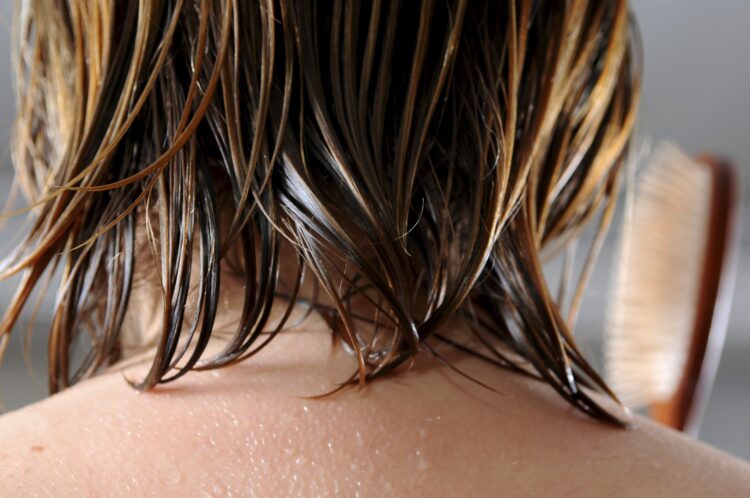
Source: goodhousekeeping.com
Wet hair is more susceptible to damage than dry hair. When our hair is wet, the proteins that make up each strand form weaker hydrogen bonds leading to more damage-prone strands when pulled or stretched.
Don’t fear, there are plenty of ways to show your wet hair TLC!
- Firstly, work through tangles before your shower, that way you don’t have to fight knots with wet hair.
- After showering, give your hair a few minutes to dry before gently brushing it. While brushing, hold a section of your hair and work from the ends to your roots.
- If you are blow- drying your hair, avoid doing so when it is sopping wet. I know you may be in a rush, but by giving your hair some time to dry before blow drying will help styling efficiency and prevent damage.
- At all costs, do not straighten or curl before your hair is completely dry. Hot tools will burn your follicles causing extreme breakage.
3. Use heat protectant
Heat styling done wrong can be the easiest way to damage your aging hair. But if we’re being honest, it would be difficult to completely give up our hot tools. On a bad hair day, a little bit of heat can go a long way. To avoid heat-styling guilt, a heat protectant like, Better Not Younger’s No Remorse styling spray, will create a protective shield for your strands and smooth hair follicles. Simply, a heat protectant aid acts as a barrier between the hot tool and your delicate hair. Don’t skip this easy step!
4. Heat styling tips
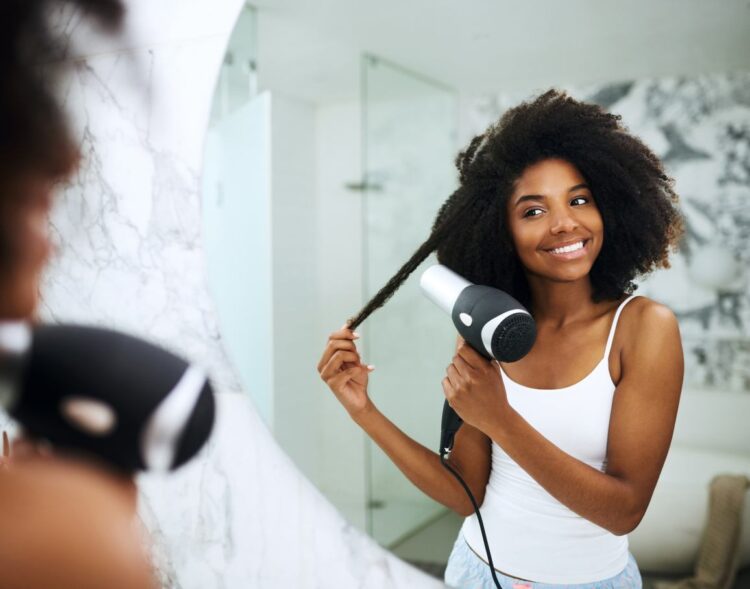
Source: allthingshair.com
On the days you need to tame or style your hair, it’s important to apply heat in a considerable way. Keep in mind these tips for heat application.
- To maximize blow-drying efficiency, separate your hair into sections, use a diffuser and hold your dryer 6-inches away. Start blow-drying on a higher temperature and gradually decrease the heat as your hair dries to prevent any damage. To avoid frizz, keep the blow-dryer nozzle pointed down. If you struggle with volume, flip your hair upside down as you finish blow-drying.
- Never use hairspray before you curl or straighten your hair. The heat will cause the alcohol in hairspray to burn. Hairspray after styling is fair game!
- Let’s talk temperature. The temperature of your hot tool will vary based on your hair type and texture; however, the safest range is 200-350 degrees. The temperature you chose should allow you to smooth or curl your hair once. Running over a section multiple times on a lower temperature setting will lead to damage. One and done!
- Pay attention to your plates. Be sure to choose straighteners and curlers that use ceramic, porcelain or tourmaline in their plates or barrels. Tools with these materials will conduct heat evenly, rather than randomly surge in heat levels.
- While straightening or curling your hair, only apply heat for 1-2 seconds at a time.
5. Gentle accessories and styles
Excessive heat-styling isn’t the only way to damage your aging hair. The right accessories and hairstyles play a role in hair health.
- Choose gentle hair accessories to minimize breakage. Instead of using plastic elastics, opt for fabric-wrapped hair ties. Additionally, a soft-bristle brush, made from natural materials, stimulates hair strength and growth. A boar-bristle brush triggers natural oil production in the scalp and reduces frizz.
- Believe it or not heavy hair accessories, like hats and sunglasses can lead to breakage around your hairline.
- Relieve your scalp by loosening up tight-hairstyles! Hairstyles that cause tension in your scalp include high and tightly wound buns, cornrows, and anything that pulls hair from your crown. Instead, try a low-bun with your front pieces falling or a loose ponytail.

